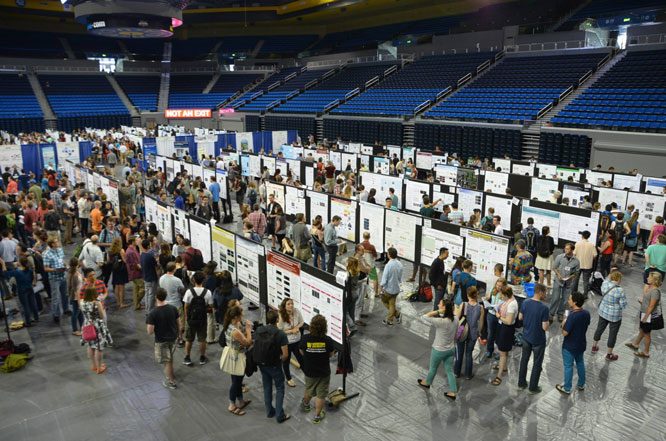
One of my favorite parts about working as a scientist is attending scientific conferences (at least, before covid). These conferences are great opportunities to meet and network with like-minded professionals, catch up with friends, and see and hear the hottest and latest new research.
They can also be a bit overwhelming, like drinking out of a firehose, or sending Randy a casual email only to end up becoming part of his team and working on ABT things for years. When you show up to one of these conferences, they hand you a veritable bible with ALL of the abstracts for every session, every poster, every talk that you might want to go see. I’m talking hundreds, if not thousands, of abstracts.
Of course I don’t read all of them (I’m not much of a paleontologist, so that lets me rule out quite a few), but even among the ones I’m interested in I still have to make some decisions about which talks to go hear, and which posters to see. The only way to do this is to skim the abstracts and see which ones really grab my attention. Maybe you can see where this is going!
The first GSA I went to after reading Randy’s book, I noticed something. Every abstract that I was circling in my book was written using a form of the ABT. Especially important was the AND part. If these abstracts didn’t start off with something that I understood and agreed with, I probably didn’t even make it to the end.
Of course, the ABTs were not perfect. They weren’t written intentionally to be ABTs. There would have been plenty of room to workshop them in the course, or a Working Circle! But some folks do possess an inherent instinct for narrative, and those are the people whose talks I ended up going to.
So scientists take note! Yes, it can be very valuable to structure your talk using the ABT. But if you don’t get people in the room to hear your talk in the first place, it won’t matter. Therefore, if you are presenting at a conference, use the ABT in your abstract! You just might see me in the audience.
Michael Barthelmes
Geologic Resources Inventory Report Writer/Editor
Colorado State University/Cooperator to the National Park Service